So many books, so little time...
For the most comprehensive outline of how to use the intuitive mind during research, my ebook How to Channel a PhD will tell you everything you need to know.
As promised, here it is…
As promised, here it is…
If you really want to know a book, feel it first.
This is the essence of a particular approach to reading and studying which I have developed. It’s part of an educational philosophy which I call the Integrated Inquiry. This method combines traditional left-brain learning methods with right-brained, holistic tools. It’s grounded in the theory of Integrated Intelligence. Sceptics might say that means its not grounded at all, but I have applied these methods myself, and found them extremely useful. I will be outlining them in more detail in the book The Professor's Other Brain, which is some months away from being published. In the meantime here is a very readable and practical article I wrote about Integrated Inquiry, for the Open Information Science Journal.
The founding principal of Integrated Intelligence is that mind is non-local, and connected to a greater transpersonal mind. Biologist Rupert Sheldrake calls this the extended mind, and so do I. Information from that greater mind is processed by the brain at all times, even though most people are not aware of it. The extended mind can bring forth information from past, present and even future. Systems theorist Ervin Laszlo has described this well in his books The Akashic Mind, and The Akashic Experience. The Akashic field is a concept from Indic lore, and it states that the individual minds of human beings like you and I mind are connected to an all-knowing c0osciouisness. Everything that has ever happened in the history of the universe is recorded in the Akashic field, according to the mythology.
My experience as a man who has been using Integrated Intelligence over a couple of decades leads me to conclude that the extended mind is a fact, and all people can learn to tap into it.
The extended mind and research
Moving onto research, Integrated Intelligence can be applied to tap into the consciousness field of the both the specific material being studied (the book, paper, chapter, primary source etc) and the mind of the writer/creator of the material. To make the explanation simpler, let’s stick to the idea of a book in this case.
The mind is a self-organising system, as lateral thinker Edward de Bono likes to say. This means that it will go about organising information for you, even when you are not thinking about the subject consciously. You can harness that capacity. The process I outline here exploits that innate capacity. In short the method involves asking focused questions, being clear on your attention, and using The Feeling Sense. The Feeling Sense is the intuitive feelings that come to you via Integrated Intelligence. (For more explanation of the Feeling sense, see the following post, which includes an extract from Sage of Synchronicity).
If you are engaging in research, the first step is to decide what you are looking for. This may sound obvious, but many students actually pick up books without being clear about the information they want. Clear intention focuses the self-organising capacitity of the mind.
Right at the beginning of a research project, the questions might be very general, such as
“What topic really feels exciting?”
“What really excites me about this topic?”
Using the Feeling Sense (your intyitive feelings) and following your excitement (that which really draws you in) will put you in the right mental state fom the outset, because you are engaging in something that resonates with your spirit – it is not just another dry paper to write. You are then feeling your way forward. For my doctoral thesis, the question I found most exciting was
How has integrated intelligence become suppressed, and mainstream mechanistic depictions of mind privileged, in contemporary Western science, society and education; and what are the implications of this for modern education and society?
Later the questions become more specific. For my thesis, they were as follows.
• What is integrated intelligence?
• In what ways does integrated intelligence differ from current mainstream dominant definitions and assumptions about consciousness and intelligence?
• How have rational/linguistic definitions of consciousness and intelligence dominated these fields; and why has integrated intelligence been largely neglected in modern scientific discourse?
• What power plays within these discourses have resulted in the exclusion of integrated intelligence?
• What have been the seminal moments in the history of the West at which integrated intelligence has been excluded?
• How has the focus upon mechanistic representations of mind affected contemporary schooling and education?
• What are the possible implications of incorporating integrated intelligence into modern society and educational practice?
The narrowing down of the subject of enquiry is crucial to any research project.
Now let’s move onto the subject outlined in the title of this post. How do you feel a book? There are several steps in the process.
Day 1
1) Write down the key questions. I prefer to use a computer, as later you can write in the ‘answers’ easily.
2) Scan and select. There are many ways to scan for books and materials. Just a few traditional methods are internet searches, database searches, asking around, and the old fashioned walking through library bookshelves. Use those methods by all means. However, you can add an additional dimension to your data selection process by using them with relaxed concentration using the Feeling Sense. Take note of intuitive prompts and especially what ‘jumps out’ at you. Pat attention also to synchronicities. In The Road Less Travelled, M. Scott Peck writes of being stumped at a particular point in his research, while staying at a friend’s place with a good library. Just at that moment the maid walked into the room and handed him a book which was perfect for his needs.
3) Ask. Write down the precise questions you wish to answer, before you open the book you have chosen. Put the questions out to Spirit, and do so slowly, carefully and deliberately. Give thanks for the help that you are about to receive. I like to imagine myself speaking to the great light at the heart of the universe. You can change the image to one you feel comfortable with, according to your spiritual beliefs (or lack thereof)
4) Connect and feel. Place the book on the desk in front of you, and place your hands on it. Or hold the book in your hands, or put it up to your chest or forehead, if that works for you! Get a “feel” for the book and the author. Close your eyes,, keep the mind quiet and present, and note any intuitive feelings that come to you. Repeat the key questions if you like. Do this for a minute or longer.
5) Access the field. Relax and breathe deeply. Then begin to flip through the entire book, going at a rate of about a second or two per page. Relax your vision, and allow your peripheral vision to operate. In other words, you are not reading as such, but allowing the whole double page to come into vision. If you find that you are focusing upon words, images and headings, just return your vision to the whole double page again. In short, breathe, relax, but remain present. Don’t allow the mind to wander. This should take less than five minutes for most books. When you finish, relax in the knowledge that you have accessed the field of consciousness of the book, even though you may not know it. Take a break for a minute or two.
6) Access the field (again). Ask your questions again. Then begin to skim through the book, again at about a second per page. This time allow your eyes to narrow in on headings, images, words that pop into your mind. Relax deeply when you have finished.
7) Scribble. Write down tentative answers to the question you wrote in step one. Just write a few words or sentences. That’s all that’s required. You will only have a vague sense of what the book is about at this point, but just relax with that. Use your Feeling Sense as well as your intellect. E.g. you might write “I feel that the writer is arguing that psychic experiences are interesting, but not important to education.”
8) Incubate. This is a fancy word which means to sleep on it! Incubation is an important part of the process. Your mind will go about processing data, including from the extended mind, after you have left your study desk. You can ask Spirit for help as you are falling asleep, if you like. Keep a note pad or diary handy beside the bed, just in case you have a relevant dream during the night.
Day 2 and onwards
1) Ask your questions again.
2) Write (optional). You may have a whole heap of ideas coming through. Write them down if you feel the need to. Don’t worry too much about accuracy and detail. You can check up on those later.
3) Dip. In the dipping phase you move rapidly through the book, reading only those sections which you feel drawn to. I emphasise, you should use the Feeling Sense to select what parts of the book to read. Do not read the rest! The key to the entire process is to trust your Integrated Intelligence. The dipping phase may be just a few minutes, or could be several hours. It will depend upon how relevant the book is to your research quest. Take light notes during dipping if you wish, but these should be very general at this point. Take a break of at least ten minutes after you finish. You need to stay relaxed and present. This is essential for the process to work effectively.
4) Write. Return to your questions and write as much as you can under each question. Where your thoughts are unclear or uncertain, say so. For example: “The writer seems to be arguing that all psychics are deluded, but I am not certain about that (I may need to read beginning of second chapter).” I suggest resting another day before moving onto the final phase.
5) Add to draft (optional). You may want to add your notes to your essay/chapter/thesis. After that point, you can draft the essay, which means polishing it so that it makes sense as a whole. Be careful to stick to academic citation conventions if it is a formal project.
The process I outline here need not be followed strictly. You can adjust it according to your specific needs. One variation is to select as many as ten books or papers at a time. This is useful to get an overview of literature from the subject matter.
One issue that you may find with this process is as follows. If you are a more formal left-brained type of person, the Feeling a Book method may be difficult or even unsettling. It will require persistence if you are to get optimal benefit from it. I would suggest trying it for short papers first rather than going right into it, as it may lead to a general sense of confusion and frustration if you don’t “get it”. It takes time for the brain to adapt to new ways of knowing.
If you go to Amazon.com and read the reviews of Paul Scheele’s Photoreading method, you will see that there are a lot of negative reviews. I believe that the greatest failure of Scheele’s method is that it fails to teach people how to access intuitive, nonlinear information from the brain. If you spend time developing Integrated Intelligence and the Feeling Sense over a longer period, I predict you will find the experience much more fruitful.
If you use the Feeling a Book method, please let me know how you go with it.
Marcus

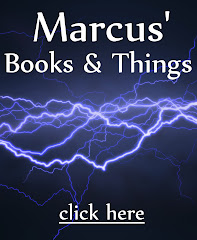
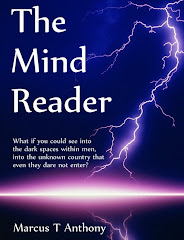
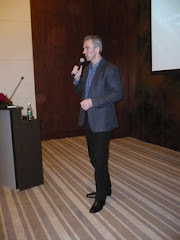

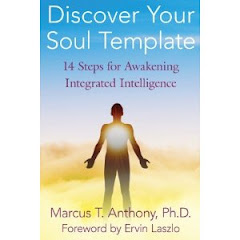

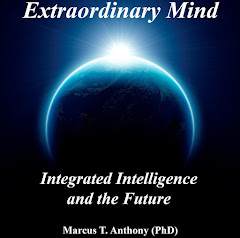





No comments:
Post a Comment